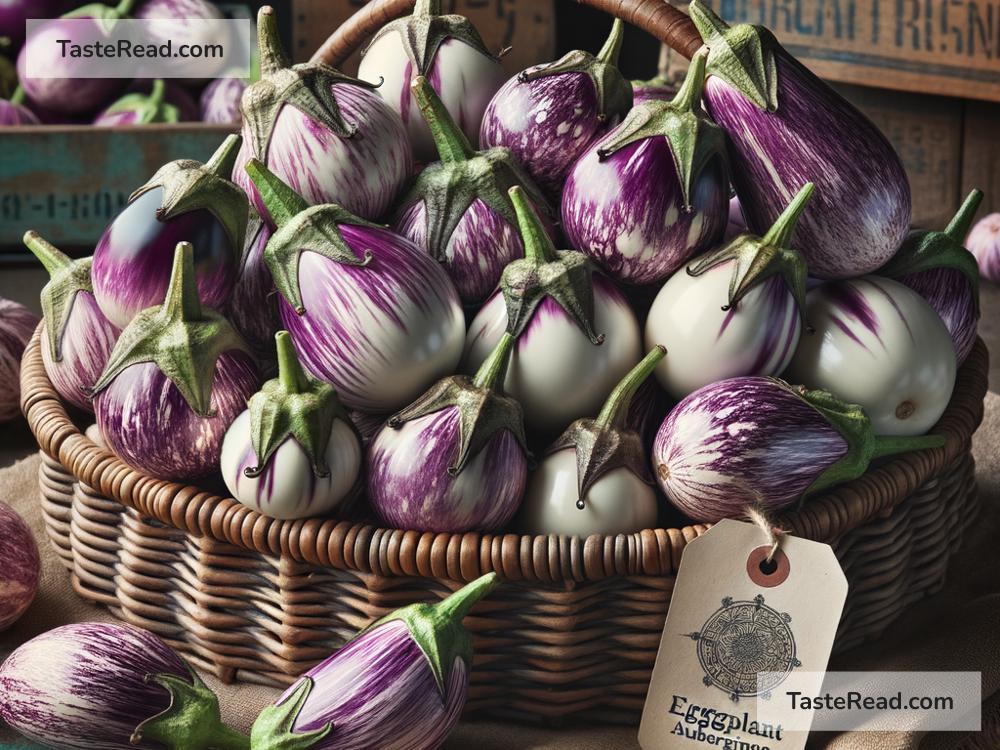Why Are Eggplants Called Aubergines in Some Countries?
If you’ve ever bought groceries in different parts of the world or watched cooking shows from another country, you may have come across something peculiar: the humble eggplant is often called “aubergine.” At first, you might wonder if aubergine is a different fruit—or perhaps fancy culinary jargon—but nope! They’re the exact same thing.
It’s fascinating how one vegetable can have different names depending on where you live. But why is this the case? Let’s dive into the story behind eggplants and how their name evolved over time.
A Tale of Two Names: Eggplant vs. Aubergine
The word “eggplant” is most commonly used in the United States, Canada, and Australia. However, in the United Kingdom, much of Europe, and other parts of the world, the same vegetable is called “aubergine.” These names are more than just local preferences; they reflect the vegetable’s rich cultural and linguistic history.
To understand the difference, we need to explore where the vegetable originally came from and how it traveled across the globe. Eggplants weren’t always called “eggplants” or “aubergines”; in fact, they’ve been known by many names in different languages over the centuries.
The Origins of the Eggplant
Eggplants are believed to have originated in India or Southeast Asia thousands of years ago. From there, they spread to China, the Middle East, and Europe through trade routes and cultural exchange. When the vegetable arrived in different regions, it was given local names based on language and culture.
In India, early eggplants were often small, white, and oval-shaped—similar to eggs. This resemblance is said to have contributed to its eventual name in English: eggplant. But that wasn’t the only influence at play.
Why It’s Called Aubergine in Some Countries
To understand the name “aubergine,” we need to look at the French language, as well as the influence of Arabic and Sanskrit. Here’s a simple breakdown:
-
From Sanskrit to Arabic: In ancient India, the eggplant was known by the Sanskrit word “vatinganah.” When the vegetable moved westward to the Middle East and Arabic-speaking regions, its name changed slightly to “al-badinjan.” Arabic speakers brought eggplants to Europe during the medieval period.
-
Into French: As Arabic words influenced European languages, the French adapted “al-badinjan” into “aubergine.” This name stuck and became widely used in France and surrounding countries.
-
British Adoption: Because Britain shares close historical ties with France, the word “aubergine” traveled across the English Channel and became the British English term for the vegetable. To this day, people in the UK prefer calling it aubergine.
So, when you hear someone say “aubergine,” they’re actually using a term with deep historical roots stretching all the way back to Sanskrit and Arabic.
The Story Behind “Eggplant”
While Europeans were using “aubergine” to describe the vegetable, another naming tradition was developing in English-speaking countries, particularly in the United States.
In the 18th century, European settlers in North America encountered varieties of eggplants that were round and white—again resembling eggs. This similarity inspired the name “eggplant,” which gradually replaced earlier terms like “mad apple” (a more archaic English term for eggplant). Over time, the name stuck in regions like the U.S. and Canada.
Australia also adopted the name “eggplant,” likely due to British settlers bringing it along with them.
Cultural Differences and Usage
Today, whether people call the vegetable “eggplant” or “aubergine” depends largely on where they live:
- In English-speaking countries like the United States, Canada, and Australia, “eggplant” is the go-to term.
- Meanwhile, in the United Kingdom, South Africa, and much of Europe (especially France and Italy), “aubergine” is widely used.
Interestingly, many other countries also use variations of “aubergine” based on their native languages. For example, Italians call it “melanzana,” while Germans refer to it as “aubergine,” borrowing directly from French.
A Vegetable with Many Names!
Eggplant isn’t the only food with multiple names. Different countries often have unique terms for fruits and vegetables—like “zucchini” in the U.S. versus “courgette” in the UK, or “cilantro” versus “coriander.” These variations highlight the historical, linguistic, and cultural influences on language.
Whether you call it eggplant or aubergine, one thing remains the same: it’s a versatile and delicious vegetable. From ratatouille and baba ghanoush to eggplant parmesan and stir-fries, this glossy purple veggie is loved worldwide.
So next time you’re enjoying a meal and someone mentions “aubergine,” you’ll know they’re talking about the same thing as good old “eggplant.” It’s a small piece of language trivia that speaks to cultural diversity—and it might just spark an interesting conversation at the dinner table.
In the end, no matter what you call it, the eggplant/aubergine stands as an example of how language and history intertwine, giving us multiple names for the same tasty vegetable.


